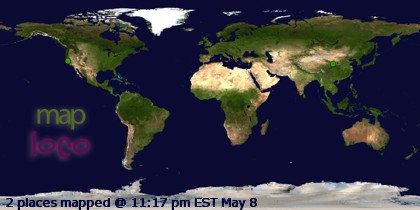The phrase "like watching a train wreck" is frequently used by English speakers for a variety of situations. Actual "old timey" black and white footage of train wrecks showing steam locomotives going over broken bridges or colliding head on into each other are anachronistic and un-relatable by modern humans. But the Spanish high speed rail train wreck yesterday in North West Spain was captured on video (link here).
It is a terrible tragedy that more than 70 people died and 130 were injured on that train wreck. Spain has one of the most enviable rail systems in Europe. I've taken the train from Madrid to Toledo and found it comfortable, affordable, efficient, clean, and pleasant. If you watch the 14 second video
http://news.yahoo.com/video/cctv-video-shows-spain-train-121213066.html
from a purely mechanical stand point (no humans are visible, even if you know the train is full of real people) around the 5 second mark, you see either the first car or the 2nd car behind the engine begin to leave the track. As the car starts to shift, part of the train rises and hits the high voltage line - or the shifting car hits a tower supporting the high voltage line - and I think that is what causes the flash that looks like an explosion.
As part of my job as an engineer, I analyze failures of large, complex systems. Rarely is there video footage of the point of initiation of failure events, and usually we have to piece together secondary evidence to try and understand what lead to the failure. So it is difficult for me to not watch this particular train wreck.
The engine does not appear to be the cause. The cars behind the engine did not fully decouple from the engine, because if they had, the engine would have continued unabated while the rest of the train careened off the tracks - unabated that is, until it coasted to a stop several miles away, the high voltage lines being damaged and the main breakers at the last relay station tripping. So what makes a train car leave the track? A bad track / damaged track can, but in this case, the track supported the heavier engine just fine. A ruptured wheel (wheel burst) on the car could cause this, but the investigation has not yet shown that to be the case. There did not appear (in the video) to be any explosions under the train, so sabotage / terrorism does not appear to be an obvious cause.
My heart goes out to all of the families of those people killed and injured on the train crash. I do hope that the Spanish transportation investigators are able to piece this together, and issue corrective actions to mitigate risks of future crashes that might have the same cause.
10 years ago

Sadly, when looking at hoof prints, think of horses... not zebras. There was no mechanical failure. There was human error.
ReplyDeletehttp://politica.elpais.com/politica/2013/07/25/actualidad/1374713876_139202.html
"El Pais cited sources close to the investigation saying the driver stated immediately after the crash that he had been traveling at 118 mph on the curve, which had a speed limit of 49 mph."
Almost 2.5X above the rated safe limit of the curve. The driver cost 80 people their lives.
English version, here:
ReplyDeletehttp://worldnews.nbcnews.com/_news/2013/07/25/19661944-american-among-80-killed-in-spain-train-crash-driver-detained?lite